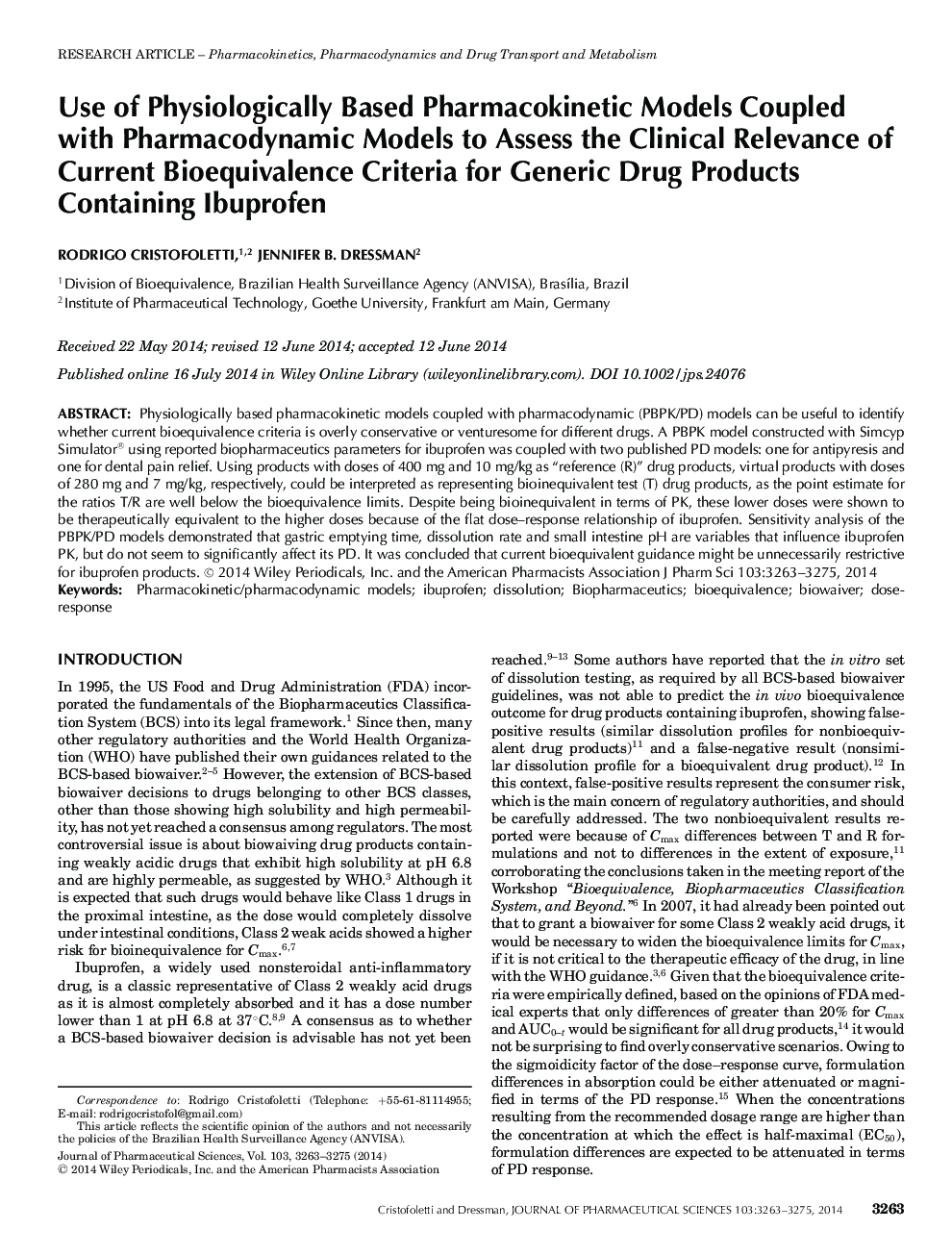| کد مقاله | کد نشریه | سال انتشار | مقاله انگلیسی | نسخه تمام متن |
|---|---|---|---|---|
| 2484679 | 1114322 | 2014 | 13 صفحه PDF | دانلود رایگان |
عنوان انگلیسی مقاله ISI
Use of Physiologically Based Pharmacokinetic Models Coupled with Pharmacodynamic Models to Assess the Clinical Relevance of Current Bioequivalence Criteria for Generic Drug Products Containing Ibuprofen
ترجمه فارسی عنوان
استفاده از مدل های فیزیولوژیکی مبتنی بر فارماکوکینتیک همراه با مدل های فارماکودینامیکی برای ارزیابی اهمیت بالینی معیارهای بی اک فرآوری فعلی برای داروهای عمومی که حاوی ایبوپروفن هستند
دانلود مقاله + سفارش ترجمه
دانلود مقاله ISI انگلیسی
رایگان برای ایرانیان
کلمات کلیدی
مدل های فارماکوکینتیک / فارماکودینامیک، ایبوپروفن، انحلال، بیوفرم دار، بیوگرافی بیوایور، دوز واکنش،
موضوعات مرتبط
علوم پزشکی و سلامت
داروسازی، سم شناسی و علوم دارویی
اکتشاف دارویی
چکیده انگلیسی
Physiologically based pharmacokinetic models coupled with pharmacodynamic (PBPK/PD) models can be useful to identify whether current bioequivalence criteria is overly conservative or venturesome for different drugs. A PBPK model constructed with Simcyp Simulator® using reported biopharmaceutics parameters for ibuprofen was coupled with two published PD models: one for antipyresis and one for dental pain relief. Using products with doses of 400Â mg and 10 mg/kg as “reference (R)” drug products, virtual products with doses of 280Â mg and 7 mg/kg, respectively, could be interpreted as representing bioinequivalent test (T) drug products, as the point estimate for the ratios T/R are well below the bioequivalence limits. Despite being bioinequivalent in terms of PK, these lower doses were shown to be therapeutically equivalent to the higher doses because of the flat dose-response relationship of ibuprofen. Sensitivity analysis of the PBPK/PD models demonstrated that gastric emptying time, dissolution rate and small intestine pH are variables that influence ibuprofen PK, but do not seem to significantly affect its PD. It was concluded that current bioequivalent guidance might be unnecessarily restrictive for ibuprofen products.
ناشر
Database: Elsevier - ScienceDirect (ساینس دایرکت)
Journal: Journal of Pharmaceutical Sciences - Volume 103, Issue 10, October 2014, Pages 3263-3275
Journal: Journal of Pharmaceutical Sciences - Volume 103, Issue 10, October 2014, Pages 3263-3275
نویسندگان
Rodrigo Cristofoletti, Jennifer B. Dressman,
